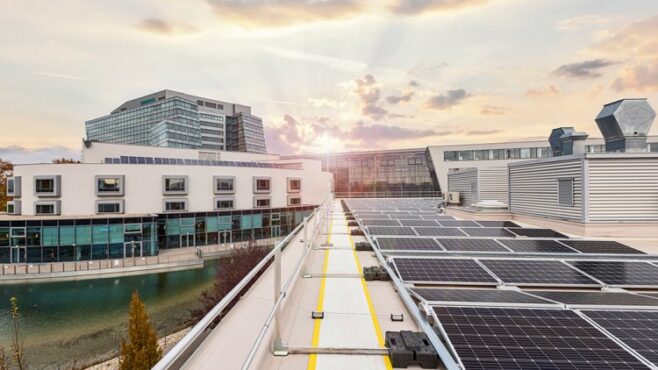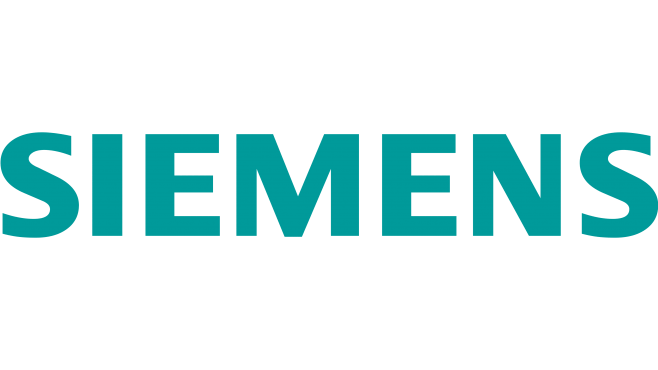
Homes and businesses can usually, though not always, rely on the traditional power grid to supply electricity. Demand, however, is likely to keep growing and there will be more pressure on the grid to maintain reliable and sufficient supply.
Emerging electrification requirements such as e-mobility will place greater demands on the grid. As electric vehicles (EVs) become more commonplace, drivers will be charging their cars at home, at work, at shopping centres and gas stations – everywhere they go.
At the same time, maintaining resilience will be a growing challenge. Renewable energy sources are becoming a bigger part of the energy matrix, but fluctuations in availability need to be balanced out by other sources, or through more efficient battery storage systems.
“Energy transition is picking up speed and there is a bigger intake of renewables, so businesses, campuses and local communities can see fluctuating power supply,” says Robert Klaffus, CEO of digital grid at Siemens. “Prosumers, who both produce and consume energy locally and can feed power back into the grid, are increasing in number, and that is one reason why grids are becoming more complex.
“In developed economies, there are many energy efficiency initiatives under way to reduce overall energy consumption, but the growth of e-mobility, as well as electrical heating and cooling, will lead to a significant increase in electrical demand. Meanwhile, in developing economies, power consumption could rise in double-digit rates each year. For remote communities, islands, or for specific industrial plants, it is important to incorporate local sources of renewable power generation and that is where the microgrid comes in.”
Control in a time of complexity
Microgrids reflect the growing trend of communities, companies and utilities working together to build resilient, flexible power systems that balance local power consumption, generation and storage. Able to operate as part of the traditional grid, independently, or both, they revolutionise the way energy resources are managed.
“Anywhere power supply can be unreliable – in remote mining operations, island communities, industrial locations, or places vulnerable to adverse weather events. Local renewable generation and storage can bring down carbon emissions, increase reliability and reduce costs,” says Klaffus.
Small wind turbines and photovoltaic (PV) generation installations are already feasible technologies for local grids, and as the costs of PV and battery storage come down, they will play a larger role in the overall energy mix, even if a traditional grid connection is maintained as back-up.
“We will see a lot more demand for microgrids because, with the technology that we have available, they are the best way to combine the benefits of multi-source generation – efficiency, reliability and lower carbon emissions,” says Klaffus.
Key to their success is the ability to balance local inputs, power from the national grid, and local consumption. As the matrix of power sources expands, the demand from EVs and other electrified systems grows, and we progress along the journey of energy transition, managing that complexity efficiently will be of paramount importance.
To steer that process, Siemens has developed its microgrid controller. Based on the open SICAM platform, a small, ruggedised piece of hardware – compact and ideal for harsh conditions – that optimises supply and demand within a local microgrid. This 20cm cube is the brain to run the microgrid.
“It does everything you need to operate a microgrid,” says Klaffus. “It can operate seamlessly between the different in-feeds – storage, local generation and the grid connection – according to the parameters specified by the operator to suit local needs. It can monitor the state of battery charge, it can perform peak shaving to level out peaks in electricity use by power consumers, provide blackout warnings and much more.
“For instance, if a lot of EVs are charging, or heating, ventilation and cooling systems are running at the same time, it can cause a problem if local PV generation is not sufficient,” he adds. “The microgrid controller balances out that demand with generation from other sources, or from stored power.”
At the heart of the campus
The technology Klaffus describes is already operational at several locations, including the Siemens campus in Vienna, which runs its own microgrid and has to support a growing number of EV charging stations.
“It is a typical campus application,” the CEO explains. “It is a large building with high power consumption at certain times of day and a lot of e-mobility. We had to figure out how to optimise local generation capacity potential, in this case PV, and storage under all circumstances, including a lot of EVs charging on cloudy days or in the evening. It is a very realistic application of the technology.”
At the campus, the smart system optimises the management of both energy use and heating. Geothermal energy is also used to heat the building, and the building complex contains a heating and cooling storage system, with heat exchangers in the building services unit enabling up to 75% of the heat to be recovered from the energy in exhaust air. That works alongside 1,600m² of PV capacity.
At the heart of the campus project, completed in late 2020, lies the microgrid controller, orchestrating all connected assets to optimise the power supply to take account of peak loads and grid capacity utilisation.
“We have reduced carbon emissions by 100 tonnes per year at one single building,” observes Klaffus. “EV charging is always available at any time of the day and when local power generation exceeds local needs we can feed the excess energy back into the grid.”
“It already works well, and we are continuously improving every time we operate the system,” he adds. “For instance, we are working hard on forecasting weather conditions in order to plan the performance of the microgrid, and we are gathering more and more data to help manage peak shaving and ensure grid stability.”
The move to a microgrid represents a big change – not only in terms of technology but also in mindset – for many businesses and communities. As we move further down the road of energy transition, and as regulations demand more reductions in carbon emissions, that change ultimately becomes a necessity. The technological infrastructure, however, has already been tried, tested and proved.


